Watercolor Paper Gone Bad
Professional grade watercolor paper (100% cotton) is expensive and it’s quite to be expected than one would want to stockpile when an opportunity arises. It’s also tempting to buy different kinds of paper to see how they perform (see my blog post “10 Watercolor Papers for Artists”). However, keep in mind that watercolor paper can and does go bad. If this happens, your paper would be partially or completely unusable.
I recently found a folder full of watercolor sheets that I had completely forgotten about. There were all kinds of paper in there – hot pressed, rough, cold pressed, different brands, all 100% cotton – professional grade. I tried one of the hot pressed sheets and it was fine. Then I tried one of the cold-pressed sheets which was taken from a pad, perhaps a few years ago.
As I started applying clean water on the paper for some wet-on-wet clouds, the paper on both short sides immediately felt off. The water was getting absorbed, and patches of the paper on the edges turned light yellow. This effect was more severe on one side vs the other. I turned the page to look at the back, and discovered the water has penetrated all the way to the back.
What does watercolor paper gone bad look like?
It will usually start getting bad from the edges toward the center of the paper. When you apply clean water, you will notice the water immediately sinking into the paper, getting fully absorbed. In some cases, water will penetrate all the way to the back of the paper. Water will not stay where you put it but it will move sideways in the paper as well. For example, if you put masking tape to create borders for your painting, and you apply water on that edge, the water will move sideways and under the masking tape. Assuming your masking tape is good quality, this would not happen if the paper was good. Another sign is that any paint applied on the paper would look muted and with no vibrancy. The paint would be fully absorbed. There would be a noticeable difference between how the colors look on bad vs good parts of the paper.
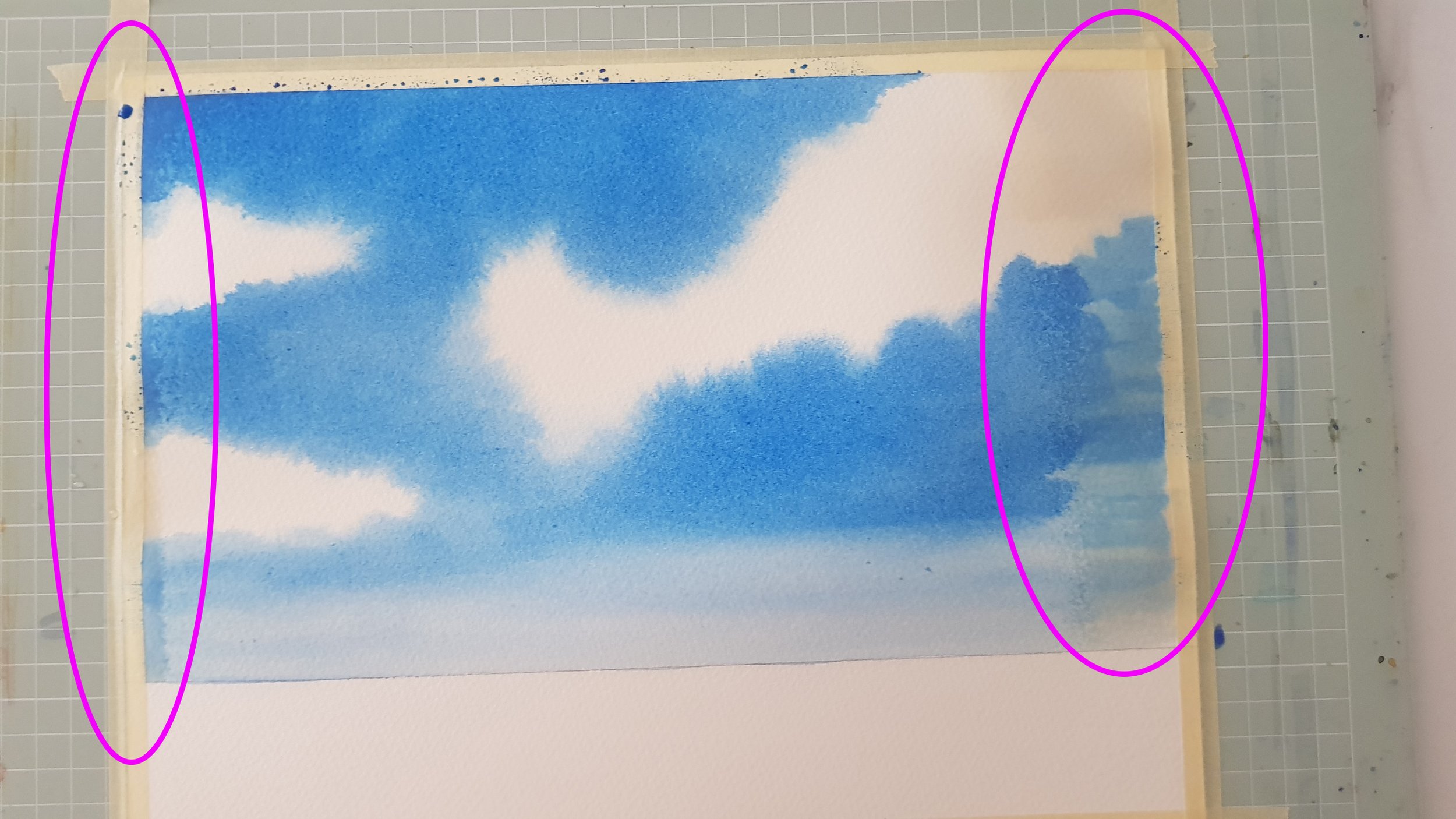
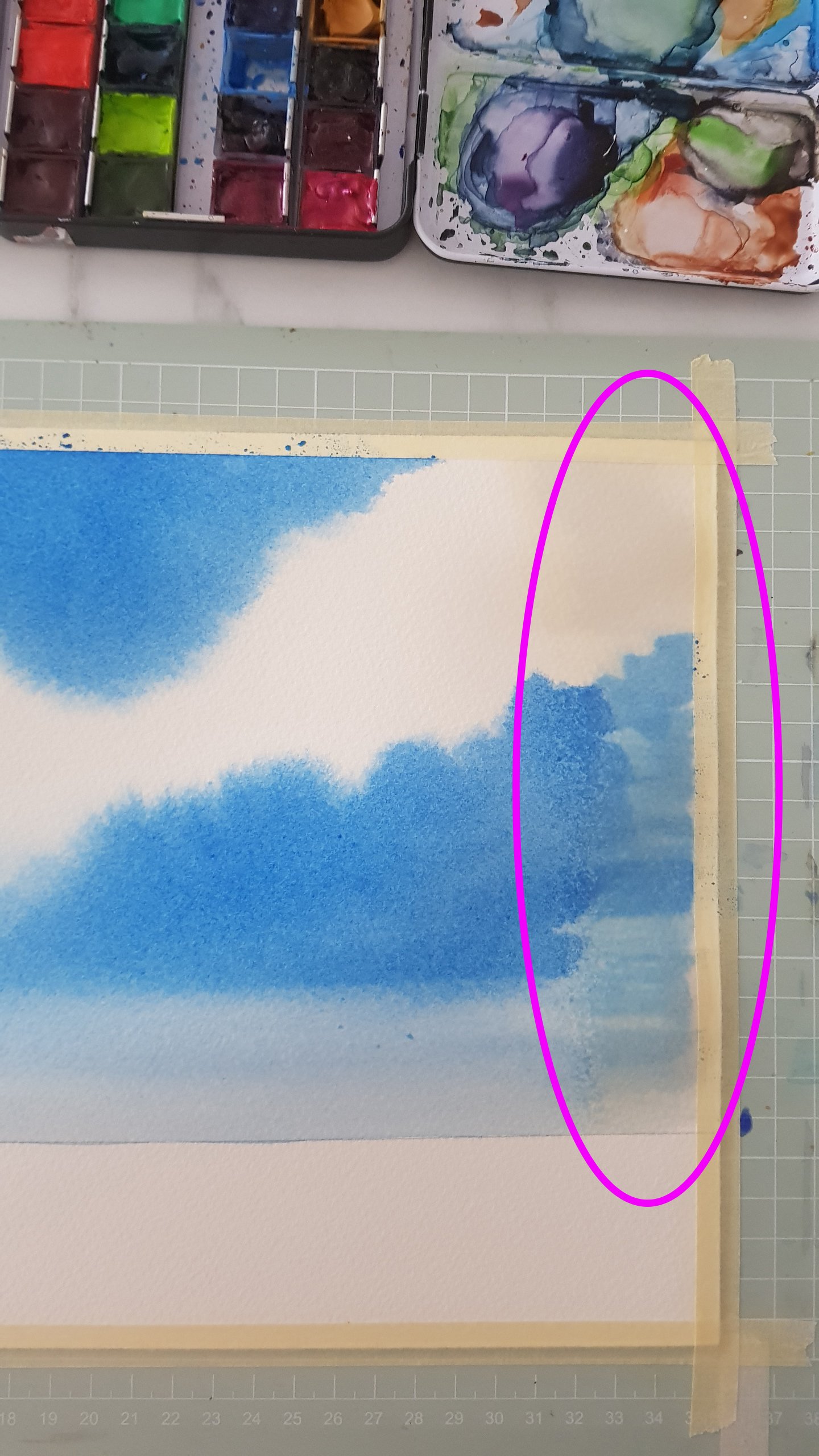
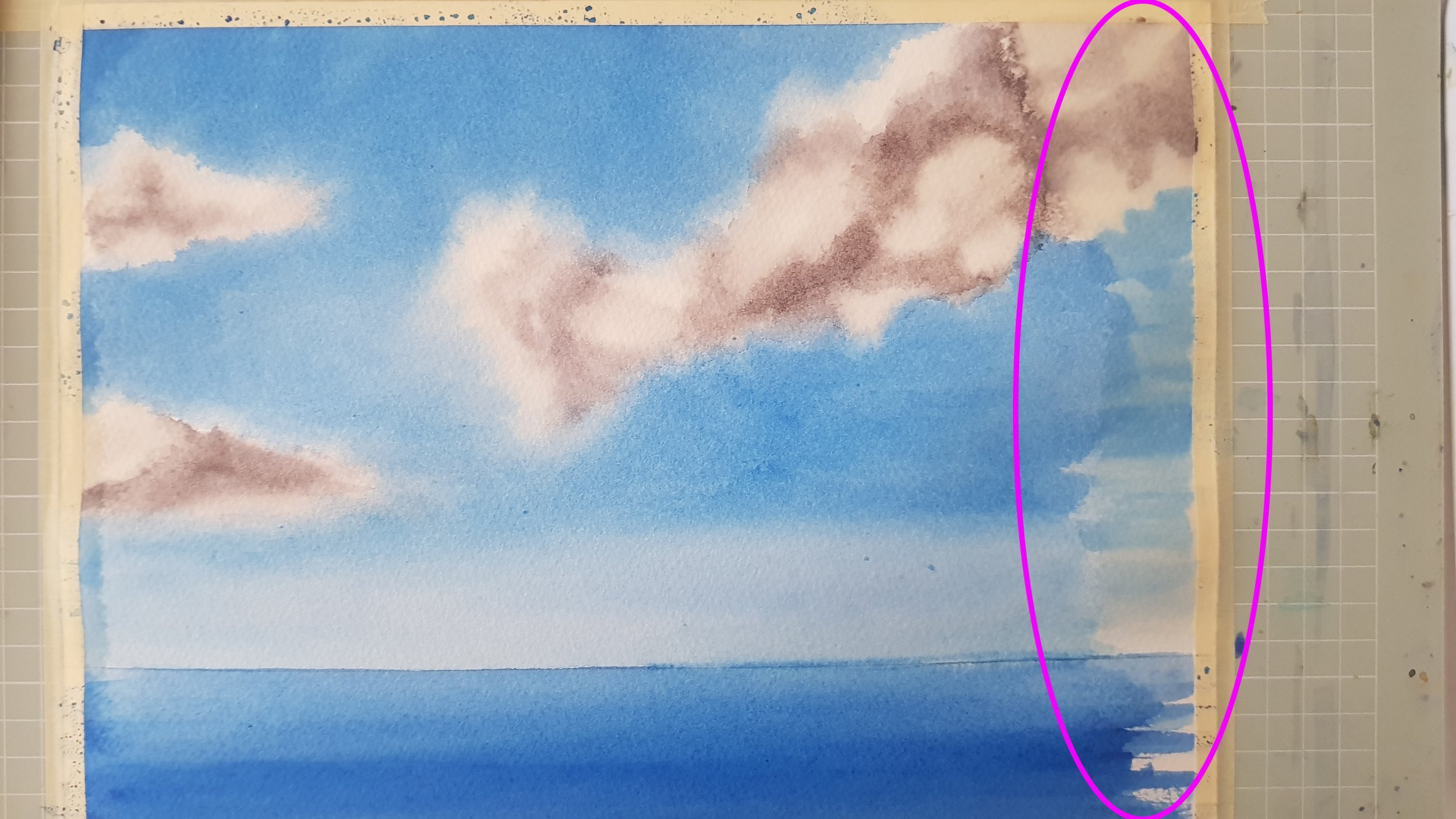
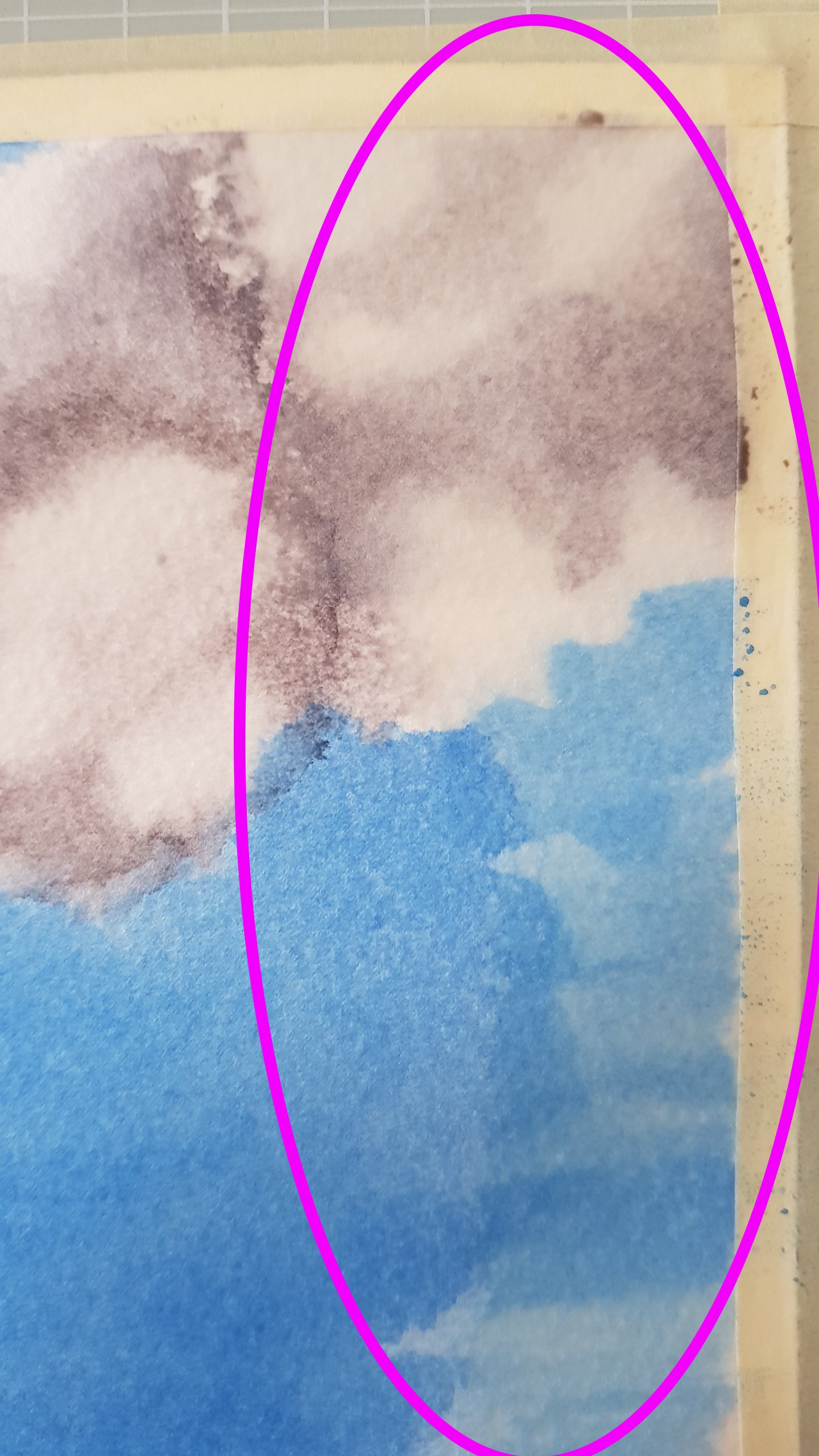
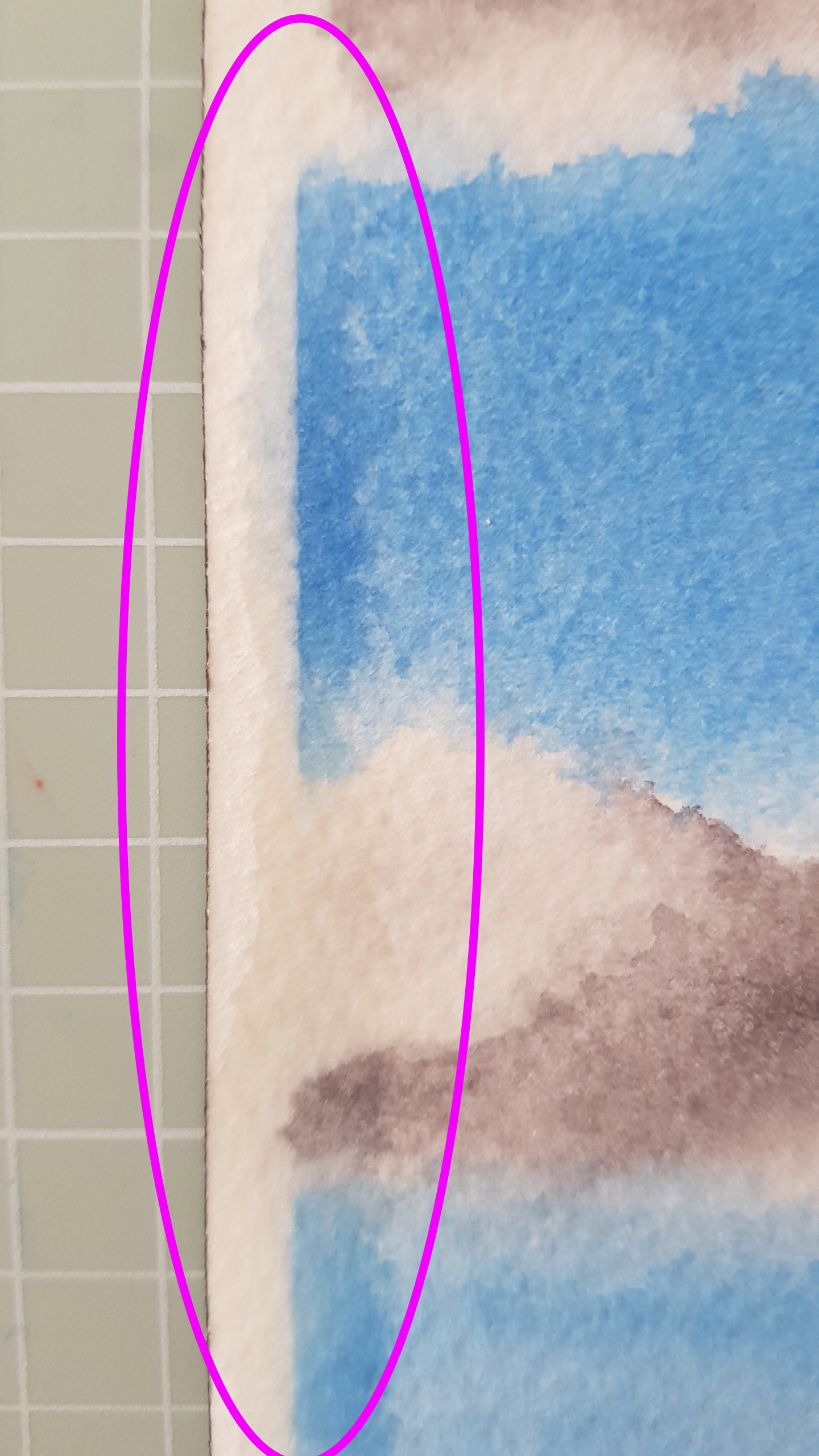
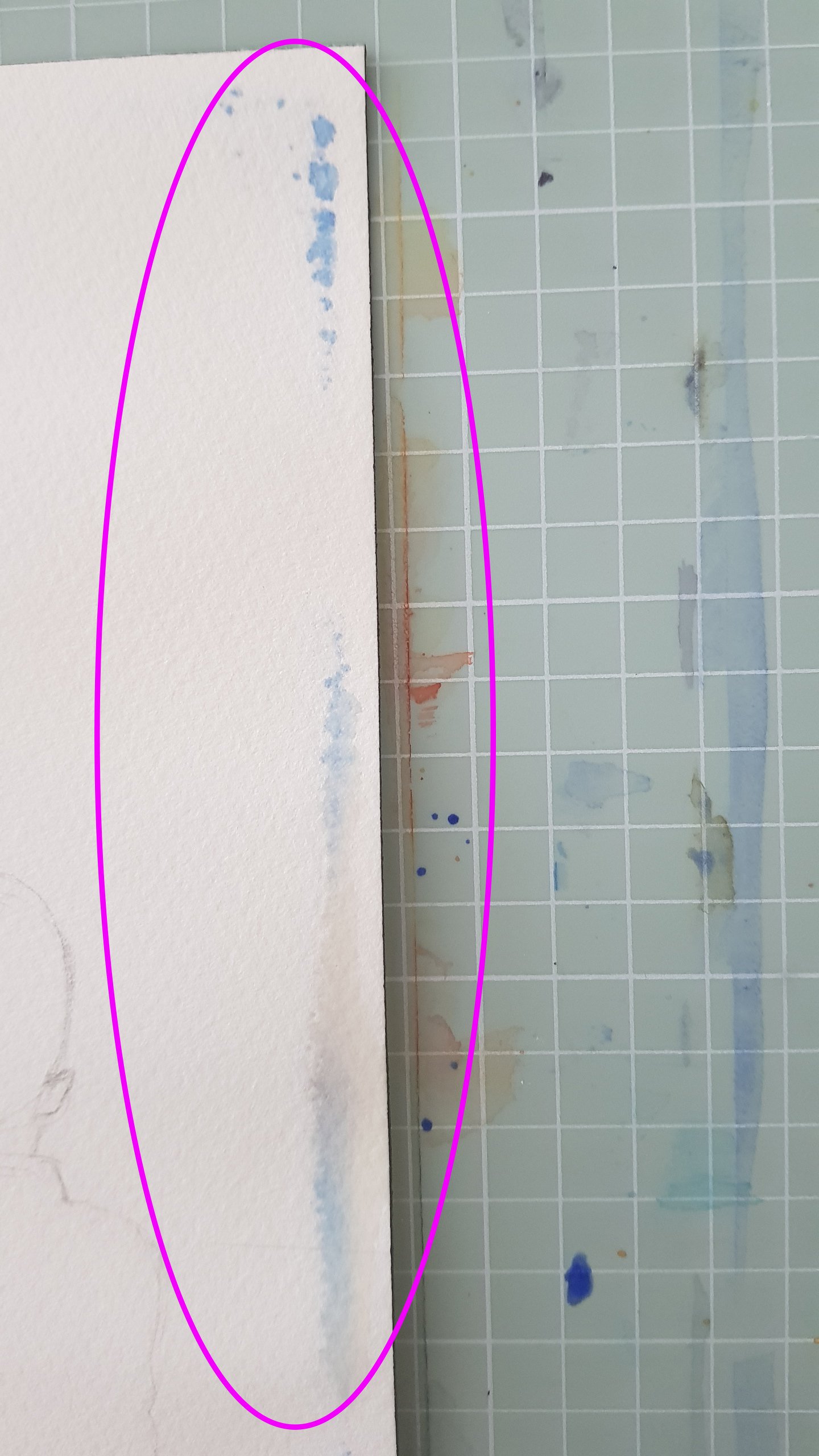
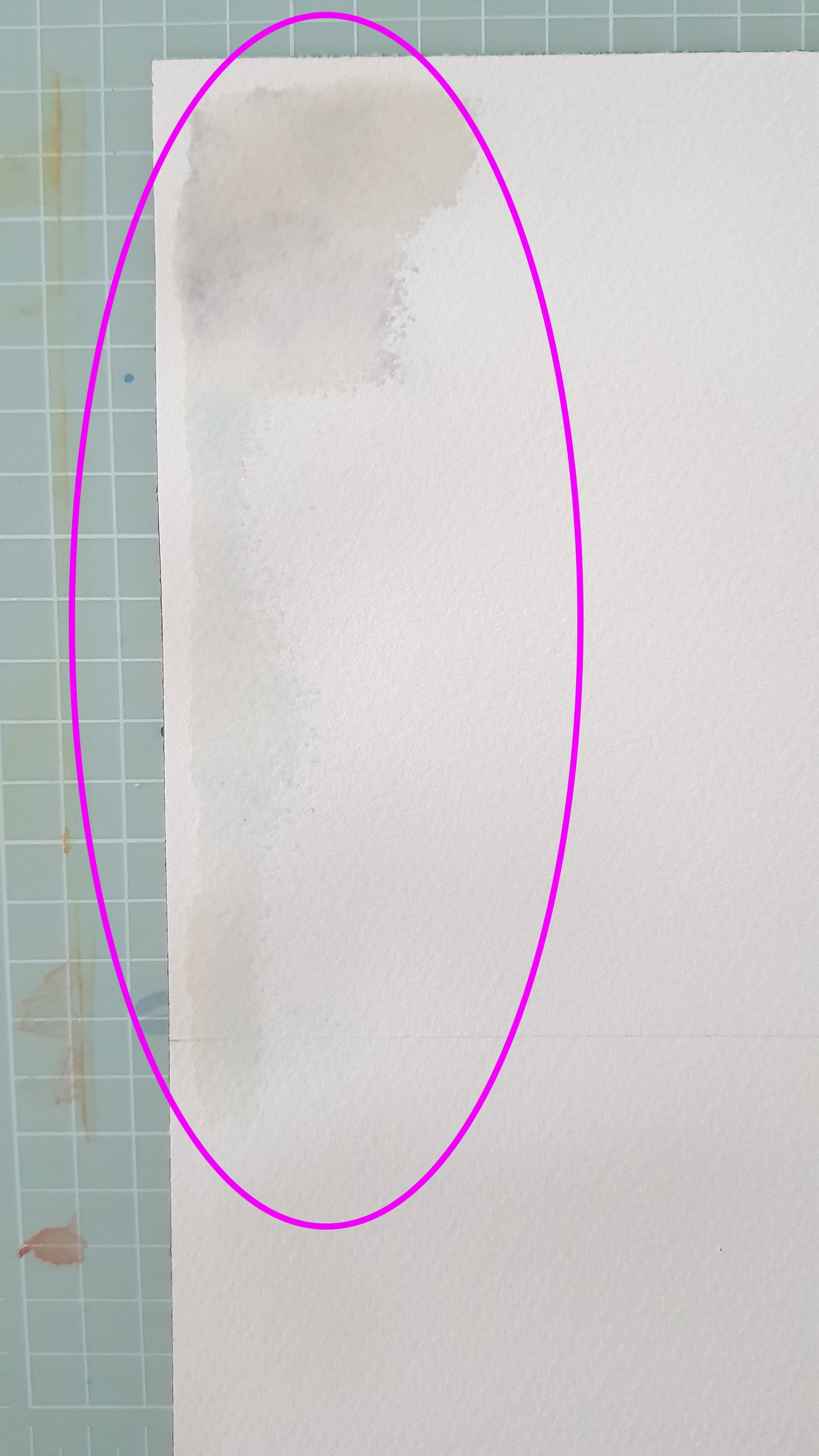
Why does watercolor paper go bad?
Most paper manufacturers use sizing in their papers. The sizing is a substance that often contains gelatin, which is made of animal bones.
Manufacturers either apply the sizing on top of the surface of the paper, or mix it with the paper ingredients during the manufacturing, in which case the sizing is throughout the paper. The purpose for the sizing is to keep the paper surface from absorbing all the water and paint you put on it. Here we’re discussing paper that’s 100% cotton and you can imagine how absorbent cotton generally is. Sizing on or throughout the paper ensures that the paper only absorbs small amount of paint and water. That way your colors look beautiful and vibrant.
The gelatin in the sizing can go bad, in which case the sizing breaks down and now there is no barrier/resistance in the paper to prevent all the paint and water from being absorbed 100%. This is why in some cases the water goes all the way to the back of the paper. Because there is nothing to stop it from doing so.
It’s worth mentioning that there are some brands of watercolor paper that say their paper does not contain gelatin or animal based products. Personally, I have not tested whether the type of sizing makes a difference to the sizing deterioration process. So the jury is still out on this.
How does watercolor paper go bad?
My personal experience is that it goes bad purely with time. The folder full of watercolor sheets I mentioned at the beginning of this post is one such example. It contained various brands/kinds of paper. Some of them have gone bad, others are fine. The storage is the same – the same folder, away from moisture. The sizing is also the same type. The only difference I can think of is that the sheets were part of pads that were bought at different times, and from different places.
That being said, my research indicates that moisture might have something to do with the deterioration of the sizing.
How to prevent watercolor paper from going bad?
Personally, the lesson for me is not to buy more paper than I am going to use in the next 2-3 months. The other thing to be careful with is watercolor paper that’s on sale. I haven’t really caught any sales, but I can see this as a potential red flag. Consider whether the reason it’s on sale is because it hasn’t moved from the shelves for a long time and the shop is trying to get rid of it, or is the sale part of some store-wide or holiday related campaign in which case it’s safer to buy.
It’s also good to keep your paper away from moisture sources (think near bathrooms, kitchens) and preferably in air tight containers. I haven’t been able to find such containers, but I have put my paper in zip bags. I think even better would be to first enclose the paper in cello bags. Be extra careful if you live in a humid climate.
Keep your paper happy so it can help you create beautiful paintings.
